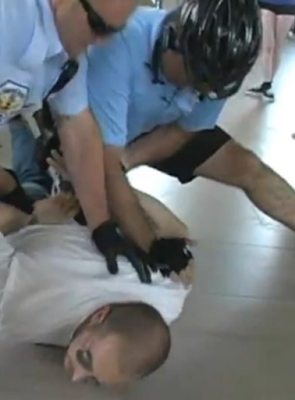On New Year's Eve, the woman at the cash register asked if I would be doing something special for New Year's Eve.
I said, "My wife and I are dancers. I will dance in my living room, and then go to bed at about 10pm. Vertical tango is for the day; horizontal tango is for the night."
She laughed. "I will tell my husband that!" I gathered my receipt and started to leave. She called out with a big smile. "Happy New Year!"
"Thanks, happy New Year!" I said with a wave.
I rarely go to late tango events. Especially on New Year's Eve. I don't have to drive on the most dangerous night of the year. It's good to take care of myself in this way.
Also, I am working on my self-esteem.
Let me explain that. As a therapist, I gain so much when I have an idea for a patient because I apply the idea to my own life. In my practice as a therapist, I truly practice. Since 2018, I have noticed an epidemic of low self-esteem. It's actually a pandemic. Worldwide, suicide rates are up and low self-esteem is driving that car off the cliff. Therapists use different techniques to help people with low self-esteem. Most interventions don't work very fast or at all. Talk, talk, talk. Something that works, I have found is really quite simple, and explains the title, "New Year's Eve and Self-Esteem":
Operationalize self-esteem
What do people with healthy* self-esteem do? A person who takes care of themselves more than anyone else can take better care of others. This is the proof of self-esteem. On the other hand, the person with low self-esteem often takes care of others, but not themselves. In my experience with patient with low self-esteem, I notice that women and girls tend to take care of others, but not themselves. Men and boys tend to show a lack of self-esteem by acting out -- drugs, alcohol, cigarettes, driving fast, staying out late, and partying a lot. Both men and women can do these acting-out behaviors, of course, but the one thing they really have in common is poor eating habits and not sleeping enough.
So this is the way I show self-care as a dancer. I prefer to go to milongas that start early. I most often go to wonderful events all over Europe, but in order to get the most out of the weekend, I dance for hours during all the early milongas, sleep, and get up to enjoy the town I am visiting. I may go to a later milonga, but often leave before it gets too late. Those who dance all milongas until the end will be the first to say that their feet are abused, their bodies are abused, and they are exhausted. My dear friends tend to look exhausted too. Why didn't I figure this out earlier? It's ingenious! I'm not so smart. I just learned it from a moment of inspiration to help a struggling patient. It has changed my life. I take care of myself. In taking care of yourself, you will be better at taking care of those under your care at work or those you love. Dress well; eat well; sleep well; make yourself safe (driving habits for example); exercise well; be kind to yourself and others; express yourself in a kind but honest way; be present and enjoy your senses; seek wisdom; connect with your world.
That is why vertical tango is for the day; horizontal tango is for the night.
Happy New Year. Maybe we have here a simple but powerful resolution for next year? Let's take even better care of ourselves?
*Healthy self-esteem: The anti-social person, the narcissist, the psychopath (etcetera) take care of themselves, but harm or neglect others.
Photo credit: Houston KPRC.
_______________________//////////////________________________
More about self-esteem if you are interested.
Go ahead and look up low self-esteem from Dr. Google. Most guides and ideas are overly intellectual. Simplify to one question: Are you taking care of yourself? Most self-esteem treatments are all about self-talk and belief. Go ahead and talk to yourself and build yourself up. I'm afraid that your mind will not believe all the nice things you tell yourself. Take care of yourself first, and watch the inner dialogue change. Would you believe others when you don''t feel taken care of but hear others say "I love you. You are wonderful"? Talk is cheap. So why would your inner dialogue convince you to have more self-esteem?
Here's something Dr. Google suggested to me in a graph that makes gaining self-esteem nearly impossible to the one who is struggling:
I found this at https://www.psychologytools.com/self-help/low-self-esteem/
The diagram here is all about how wrong and bad you are to yourself. There is no solution here. This list is mostly untouchable things and these elements are overly focused on inner beliefs. Again, the one simple solution is "take better care of yourself better han anyone else." Those around you will learn from you (like your children). The Golden Rule is not enough ("Do unto others as you would have them do unto you.") For self-esteem it is reversed in what I call the Platinum Rule: "Love and take care of yourself that you may better love and take care of others."
A wonderful guilt trip (to get you going)**
Are you a father or a mother with low self-esteem? Your children will inherit this stinky stuff. So, the buck stops with us. It's our work. We do the work. We take care of ourselves. Our children then can go on with their lives without being suicidal and depressed from low self-esteem.
**Sorry about the guilt trip for now. It's better to have guilt now than for a lifetime. Take care of yourself!










